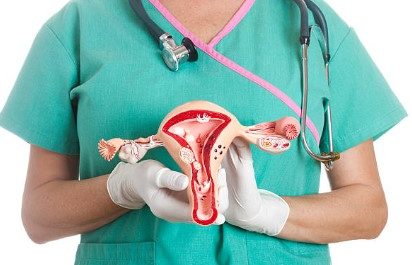In the early stages, cervical cancer may not cause noticeable symptoms. Regular screening tests, such as Pap tests and HPV tests, are essential for early detection. However, in some cases, early-stage cervical cancer may cause the following symptoms:
- Abnormal vaginal bleeding: This can include bleeding between menstrual periods, after sexual intercourse, or after menopause. It may be light or heavy, and may include spotting or unusual discharge.
- Unusual vaginal discharge: The discharge may be watery, bloody, or have a foul odor.
- Pelvic pain: Persistent pain or discomfort in the pelvis or lower abdomen may occur. This can range from a dull ache to sharp pains.
- Pain during sexual intercourse: Some women may experience pain or discomfort during or after sexual intercourse.
It’s important to remember that these symptoms can also be caused by other conditions that are not related to cervical cancer. If you experience any of these symptoms, it’s essential to consult with a healthcare professional for a proper evaluation and diagnosis. Regular cervical cancer screenings are crucial for early detection and improved treatment outcomes.
What Diagnostic tests for Cervical Cancer
There are several diagnostic tests and procedures used to detect and diagnose cervical cancer. These include:
- Pap test (Pap smear): A Pap test involves collecting cells from the cervix to examine them for any abnormalities or precancerous changes. This test can help detect early signs of cervical cancer or precancerous conditions.
- HPV test: The HPV (Human Papillomavirus) test checks for the presence of high-risk HPV strains that can cause cervical cancer. It is often performed alongside a Pap test or can be done using the same sample.
- Colposcopy: A colposcopy is a procedure that allows a healthcare provider to closely examine the cervix, vagina, and vulva using a colposcope, which is a magnifying instrument. It helps identify any abnormal areas that may need further evaluation or biopsy.
- Biopsy: During a biopsy, a small sample of cervical tissue is taken and examined under a microscope to determine if cancer cells are present. This is the definitive diagnostic test for cervical cancer.
- Imaging tests: Imaging tests such as ultrasound, CT scan, or MRI may be ordered to determine the extent of cancer spread (staging) or to assess the involvement of nearby lymph nodes or organs.
It’s important to note that the specific tests recommended may vary depending on factors such as age, medical history, and individual risk factors. Regular cervical cancer screenings, including Pap tests and HPV tests, are crucial for early detection. If abnormal results are found, further diagnostic tests may be recommended to confirm the presence of cervical cancer. It is best to consult with a healthcare professional for guidance on which tests are most appropriate for your specific situation.
How to prevent Cervical Cancer?
Cervical cancer can be prevented or its risk significantly reduced through the following measures:
- HPV vaccination: Vaccination against the most common high-risk strains of the human papillomavirus (HPV) is a highly effective preventive measure for cervical cancer. The HPV vaccine is typically recommended for both males and females before they become sexually active, usually during adolescence.
- Regular screenings: Regular cervical cancer screenings, such as Pap tests and HPV tests, are essential for early detection of precancerous changes or cervical cancer. The recommended screening guidelines may vary depending on age, medical history, and individual risk factors, so it’s important to follow the guidelines recommended by healthcare professionals.
- Safe sexual practices: Practicing safe sexual behaviors can help reduce the risk of HPV infection, which is a significant cause of cervical cancer. Using condoms consistently and correctly, limiting sexual partners, and discussing sexual history with partners can help minimize the risk.
- Smoking cessation: Smoking has been linked to an increased risk of cervical cancer. Quitting smoking or avoiding tobacco use altogether can help reduce the risk.
- Health lifestyle choices: Maintaining a healthy lifestyle can have a positive impact on overall health, including reducing the risk of cervical cancer. This includes a balanced diet rich in fruits and vegetables, regular exercise, maintaining a healthy weight, and managing chronic conditions such as diabetes.
- Regular healthcare visits: Regular visits to a healthcare provider allow for the monitoring of reproductive health, discussion of risk factors, and adherence to screening recommendations.
It’s important to remember that even with preventive measures in place, regular screenings are still necessary for early detection. If you have specific questions or concerns about preventing cervical cancer, it’s recommended to consult with a healthcare professional who can provide personalized guidance based on your individual circumstances.


